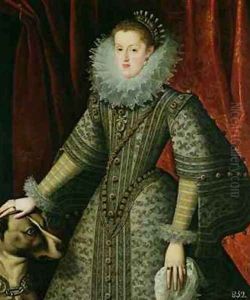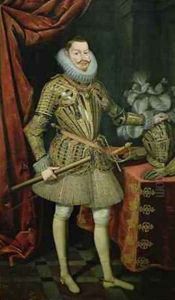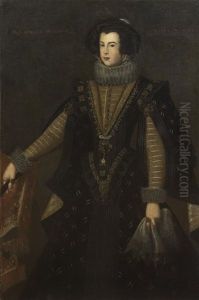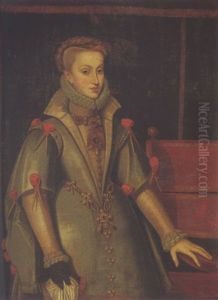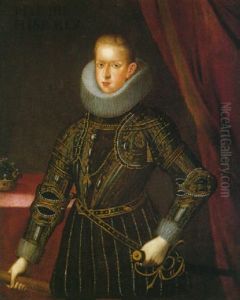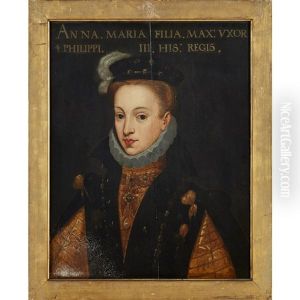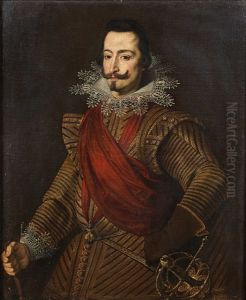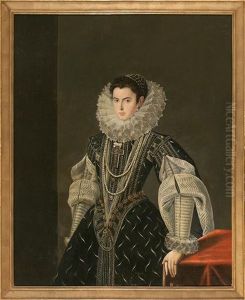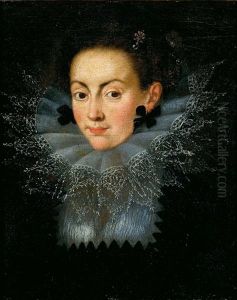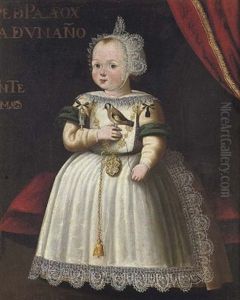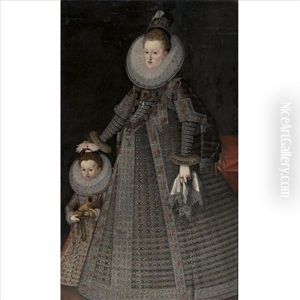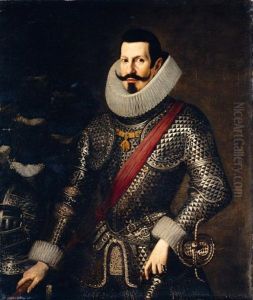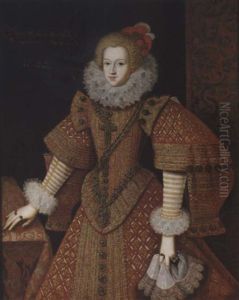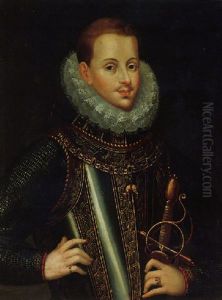Bartolome Gonzalez Paintings
Bartolomé González y Serrano was a Spanish painter of the late Renaissance and early Baroque periods. Born in Valladolid, Spain, in 1564, González was active during a time when Spanish art was flourishing under the influence of the Counter-Reformation and the patronage of the Habsburg monarchs.
González is primarily known for his work as a portraitist, and he became one of the most sought-after court painters of his time. He studied under Patricio Caxes and Lorenzo Sánchez, and his style was significantly influenced by the Italianate trends that permeated Spanish painting during his lifetime, particularly the work of Venetian artists. González's technique was marked by a clear, precise approach to form and a delicate handling of color, which he employed to capture the elegance and dignity of his subjects.
In 1603, González was appointed as the painter to Philip III of Spain, a position that solidified his status as a leading portraitist. He created numerous portraits of the royal family and the courtiers, capturing the fashion and personalities of the Spanish elite. His portraits were praised for their realism and the psychological insight they provided into the sitters. González was particularly adept at depicting the intricate details of the clothing and jewelry, which reflected the wealth and status of his clients.
González's works can be found in several major museums, and they serve as important historical documents of the Spanish court during the Habsburg dynasty. His portraits are characterized by their formal composition, the smooth rendering of flesh tones, and the opulent textures of fabrics and adornments. He was also known for his religious paintings, which were marked by a similar precision and attention to detail, though they are less well-known than his court portraiture.
Bartolomé González y Serrano's contribution to Spanish portraiture cannot be underestimated. He helped to define the visual representation of Spanish nobility in the early 17th century. Despite his success and influence, his name is not as widely recognized as some of his contemporaries, such as Diego Velázquez, who would later overshadow many of his predecessors. González died in Madrid in 1627, leaving behind a body of work that continues to be studied and admired for its elegance and historical significance.
